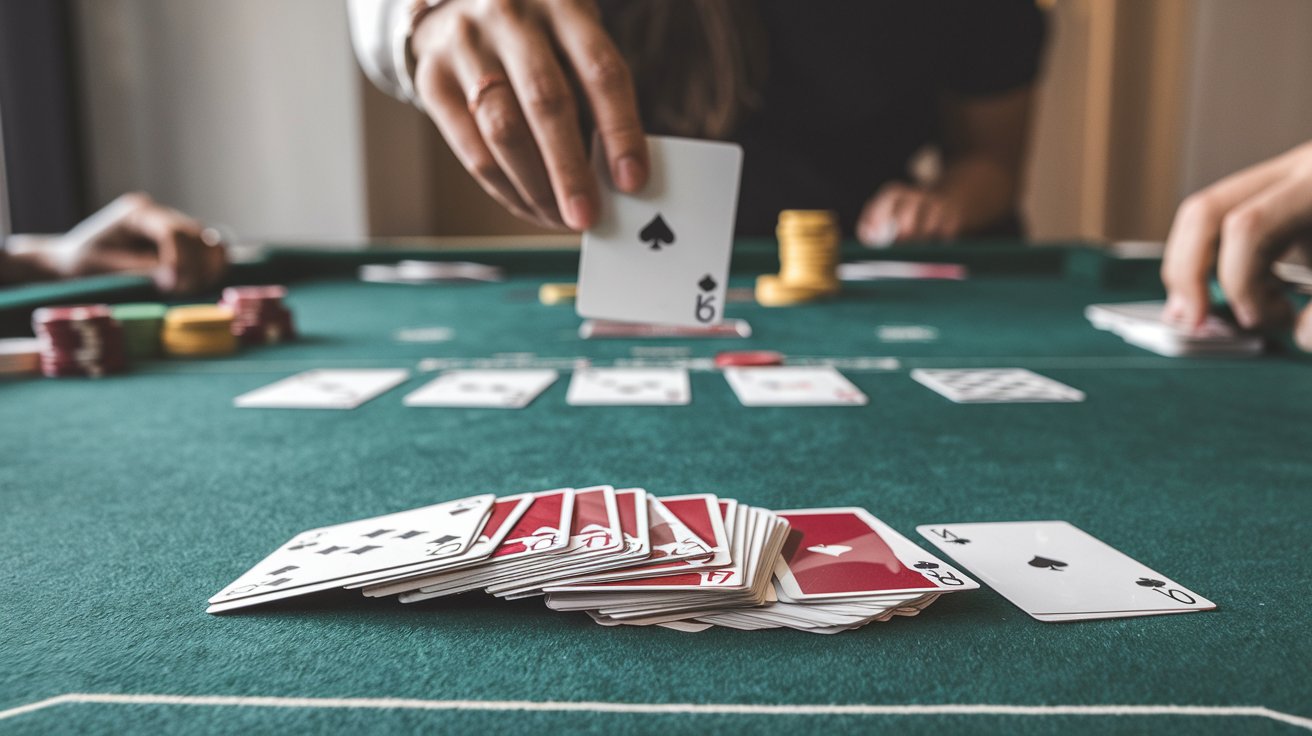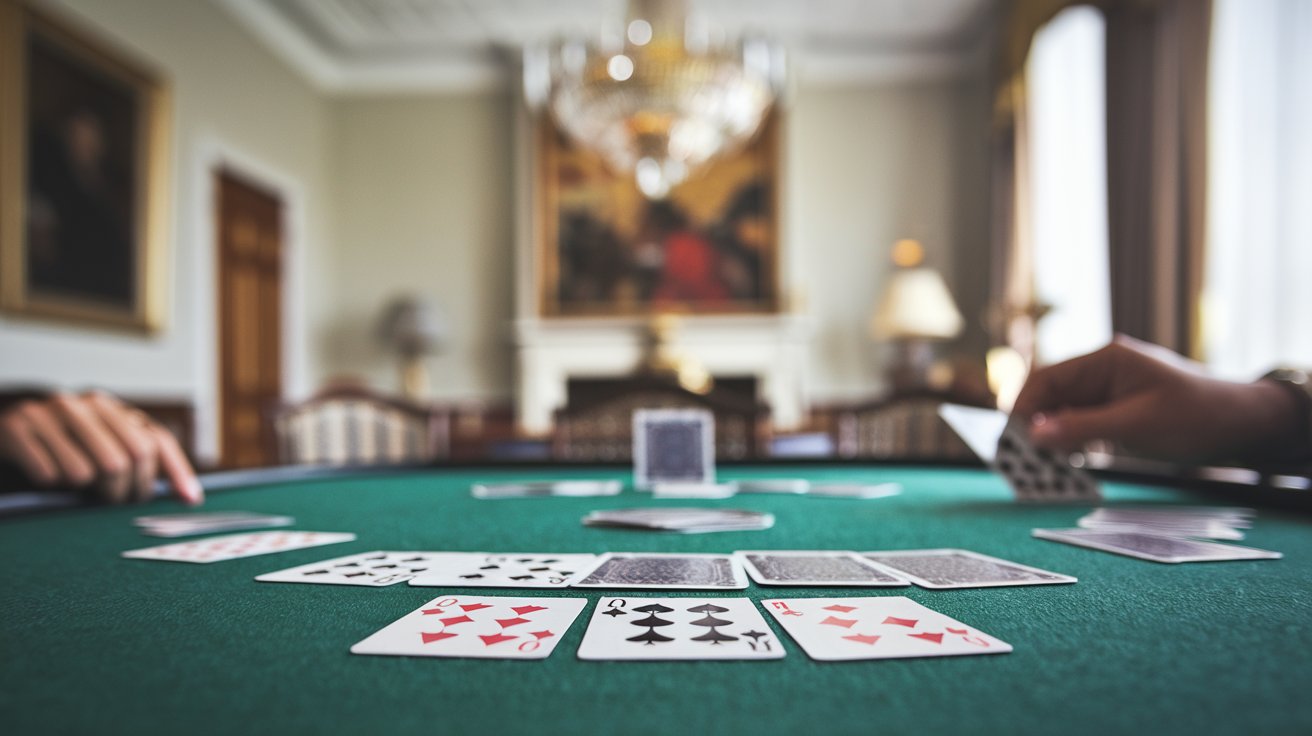Rummy is more than just a card game—it’s a battle of wits, strategy, and timing. Whether you’re playing with friends at the kitchen table or competing online, one skill can make or break your game: strategic discarding. Knowing how to discard effectively can turn the tide in your favor, helping you outsmart your opponents and inch closer to victory. In this comprehensive guide, we’ll dive deep into the art of strategic discarding in rummy, offering actionable tips, expert strategies, and insider secrets to elevate your gameplay. By the end, you’ll be ready to dominate the rummy table like a pro.
What is Strategic Discarding in Rummy?

Before we jump into the strategies, let’s clarify what discarding means in rummy. In most rummy variants—like Indian Rummy, Gin Rummy, or 13-Card Rummy—players draw and discard cards each turn to form valid sets (three or four cards of the same rank) and sequences (three or more consecutive cards of the same suit). The discard pile is where you place the card you don’t need, and it’s visible to everyone. Strategic discarding is the process of choosing which card to let go of—not just to declutter your hand, but to mislead your opponents, protect your game plan, and accelerate your path to a winning meld.
Mastering this skill is key to winning at rummy because every discard you make sends a signal to your opponents. A poorly chosen discard could hand them the card they need to win, while a clever one could throw them off track. Ready to learn how to discard like a champion? Let’s get started.
Why Strategic Discarding Matters in Rummy
Rummy isn’t just about the cards you hold—it’s about controlling the flow of the game. Strategic discarding impacts three critical areas:
- Your Hand: Discarding wisely helps you refine your melds faster.
- Your Opponents: A smart discard can confuse or block their progress.
- The Game’s Pace: It dictates how quickly you can declare a win.
Think of discarding as a chess move: every decision has consequences. To win consistently, you need to balance building your own hand with disrupting your opponents—all while keeping them guessing.
Top Strategies for Winning at Rummy with Strategic Discarding

Here’s where the real fun begins. Below are proven strategies to help you discard like a rummy master. Whether you’re a beginner or a seasoned player, these tips will sharpen your skills and boost your win rate.
1. Observe Your Opponents’ Picks
The discard pile is a treasure trove of information. Pay close attention to what cards your opponents pick from it. If someone grabs a 7 of Hearts, they might be working on a sequence (like 5-6-7) or a set (7s of different suits). Avoid discarding cards that could complete their meld—like a 6 of Hearts or an 8 of Hearts—unless you’re desperate. Instead, toss out something unrelated, like a high-value King or a random 2 of Clubs, to keep them guessing.
Pro Tip: Keep a mental note (or jot it down in casual games) of the cards your opponents seem interested in. This intel will guide your discards.
2. Prioritize High-Value Cards Early
Cards like Kings, Queens, Jacks, and Aces carry 10 points each in most rummy variants. Holding onto these high-value cards can be risky if the game ends before you meld them. Early in the game, when you’re still forming your sequences, discard these cards if they don’t fit your plan. For example, if you have a lone King of Spades and no other Spades to form a sequence, ditch it. This reduces your points liability if an opponent declares first.
Why It Works: Early discards of high-value cards signal to opponents that you’re not chasing sets of face cards, throwing them off your real strategy.
3. Hold Onto Middle Cards
Middle cards—like 5s, 6s, 7s, and 8s—are rummy gold. They’re versatile because they can fit into multiple sequences (e.g., 4-5-6 or 6-7-8). Avoid discarding these too soon unless you’re certain your opponent doesn’t need them. For instance, if you discard a 6 of Diamonds and your opponent picks it up, they could use it to complete a run or set, putting you at a disadvantage.
Pro Tip: If you must discard a middle card, wait until later in the game when opponents are less likely to need it.
4. Bluff with Clever Discards
Rummy is a mind game, and bluffing is your secret weapon. Discarding a card that seems valuable—but doesn’t fit your hand—can mislead opponents. For example, if you’re working on a sequence of 4-5-6 of Clubs, toss out a 9 of Clubs. Your opponent might think you’ve abandoned Clubs entirely and discard a 7 of Clubs, which you can snatch up to complete your run.
Why It Works: Bluffing disrupts your opponents’ ability to read your hand, giving you the upper hand.
5. Avoid Feeding the Discard Pile
Every card you discard is a potential gift to your opponents. Before letting go of a card, ask yourself: “Could this help someone win?” If you’ve seen an opponent pick up a 10 of Spades, don’t discard a Jack of Spades—it’s too obvious they’re building a sequence. Instead, discard something safe, like a card from a suit no one has shown interest in.
Pro Tip: If the discard pile is growing with unrelated cards (e.g., 2 of Hearts, 9 of Diamonds, King of Clubs), it’s a sign players are struggling. Use this chaos to your advantage by discarding strategically.
6. Use the Joker Wisely
In rummy variants with jokers, these wild cards are game-changers. If you have a joker, avoid discarding cards that could’ve been replaced by it. For instance, if you’re holding 3-4-6 of Hearts and a joker, don’t discard the 6—use the joker as a 5 to complete the sequence, then discard something useless like a stray Queen.
Why It Works: Keeping jokers flexible lets you adapt your hand faster and discard with confidence.
7. Time Your Discards

Timing is everything in rummy. Early in the game, focus on shedding high-point cards and gathering intel. Mid-game, shift to refining your melds and bluffing. Late in the game, when opponents are close to declaring, play conservatively—discard only what’s least likely to help them. If you suspect someone’s about to win, hold onto key cards (like middle numbers or jokers) to block their final move.
Pro Tip: Watch the pace of the draw pile. A shrinking deck means the game’s nearing its end—adjust your discards accordingly.
Common Discarding Mistakes to Avoid
Even seasoned players slip up sometimes. Here are pitfalls to steer clear of:
- Discarding Without Observing: Throwing away a card without checking the discard pile or your opponents’ moves is a rookie mistake. Always analyze first.
- Over-Holding High Cards: Clinging to a Jack or Queen “just in case” can backfire if the game ends abruptly, leaving you with high points.
- Predictable Patterns: Discarding cards in a sequence (e.g., 3, then 4, then 5) telegraphs your hand. Mix it up to stay unpredictable.
- Ignoring the Joker: Discarding a card that a joker could’ve replaced wastes a golden opportunity.
How to Practice Strategic Discarding
Like any skill, strategic discarding improves with practice. Here’s how to hone your craft:
- Play Online Rummy: Platforms like RummyCircle or Ace2Three let you practice against real players. Start with free games to test your discarding strategies risk-free.
- Analyze Your Games: After each match, review your discards. Did they help your opponent? Could you have misled them better?
- Simulate Scenarios: Deal yourself a hand and practice discarding based on imaginary opponent moves. This builds intuition.
- Watch Experts: Observe skilled players in tournaments or on YouTube to see how they handle tricky discards.
Advanced Discarding Techniques for Pro Players
Ready to take it up a notch? These advanced strategies will set you apart:
- Discard Baiting: Toss out a low-value card (like a 2) to lure opponents into discarding something you need. For example, if you need a 3 of Diamonds, discard a 2 of Diamonds—they might assume you’re done with that suit and discard the 3.
- Reverse Psychology: If you’re close to winning, discard a card that looks like a mistake (e.g., a 7 when you need an 8). Opponents might think you’re far from a meld and relax their guard.
- Track the Entire Deck: Mentally count which cards have been discarded or picked up. If all 7s are gone, discarding an 8 is safer since it can’t complete a set.
The Psychological Edge of Strategic Discarding
Rummy isn’t just about cards—it’s about reading people. Strategic discarding taps into psychology. When you discard a card, your opponents form assumptions about your hand. Use this to your advantage. Make them second-guess their moves, hesitate, or even panic. A confident discard can unnerve even the toughest players, giving you a mental edge.
Conclusion: Discard Your Way to Victory
Winning at rummy isn’t about luck—it’s about strategy, and discarding is the heartbeat of that strategy. By observing your opponents, prioritizing your discards, bluffing cleverly, and avoiding common mistakes, you can transform your game from average to exceptional. Practice these tips, stay adaptable, and soon you’ll be the one declaring “Rummy!” while your opponents scramble to catch up.
So, next time you sit down for a game, remember: every card you discard is a move in a larger chess match. Play it smart, and victory will be yours. Ready to test your skills? Grab a deck—or log into your favorite rummy app—and start discarding your way to the top!

Zareb Saleh is a journalist at Gulf Today and a ghostwriter for Gameoholic, specializing in gaming, technology, and digital culture. With a keen eye for industry trends, he delivers insightful stories that engage and inform readers.
